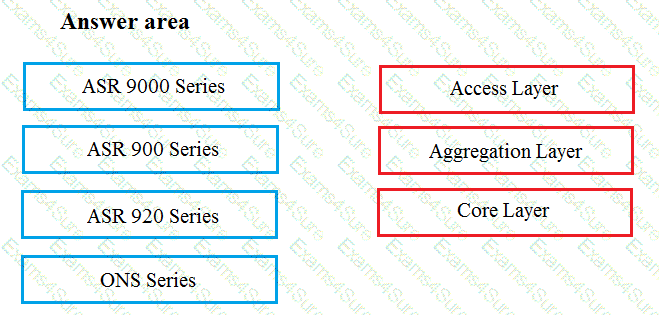Cisco Mobile Backhaul for Field Engineers
Last Update 4 days ago
Total Questions : 29
Cisco Mobile Backhaul for Field Engineers is stable now with all latest exam questions are added 4 days ago. Incorporating 500-240 practice exam questions into your study plan is more than just a preparation strategy.
By familiarizing yourself with the Cisco Mobile Backhaul for Field Engineers exam format, identifying knowledge gaps, applying theoretical knowledge in Cisco practical scenarios, you are setting yourself up for success. 500-240 exam dumps provide a realistic preview, helping you to adapt your preparation strategy accordingly.
500-240 exam questions often include scenarios and problem-solving exercises that mirror real-world challenges. Working through 500-240 dumps allows you to practice pacing yourself, ensuring that you can complete all Cisco Mobile Backhaul for Field Engineers exam questions within the allotted time frame without sacrificing accuracy.
What are three purposes of partitioning the backhaul network into independent IGP domains? (Choose three.)
In how many seconds, after a failure of the primary or active paths when BGP Fast Reroutes enables alternate
paths?
Which technology uses two or three antennas to receive (input) the signal and two or three radios to transmit
(output), plus special signal processing to improve range, reliability, and throughput.
If you partitioned the aggregation and RAN network layers into independent and insolated IGP domains, what will it do?
What technology allows for the network to simulate actual wired connections for TDM or ATM backhaul?
Match each device series on the left with its placement in a MBH network on the right. (Not all options will be used).



TESTED 19 May 2024
Hi this is Romona Kearns from Holland and I would like to tell you that I passed my exam with the use of exams4sure dumps. I got same questions in my exam that I prepared from your test engine software. I will recommend your site to all my friends for sure.
Our all material is important and it will be handy for you. If you have short time for exam so, we are sure with the use of it you will pass it easily with good marks. If you will not pass so, you could feel free to claim your refund. We will give 100% money back guarantee if our customers will not satisfy with our products.